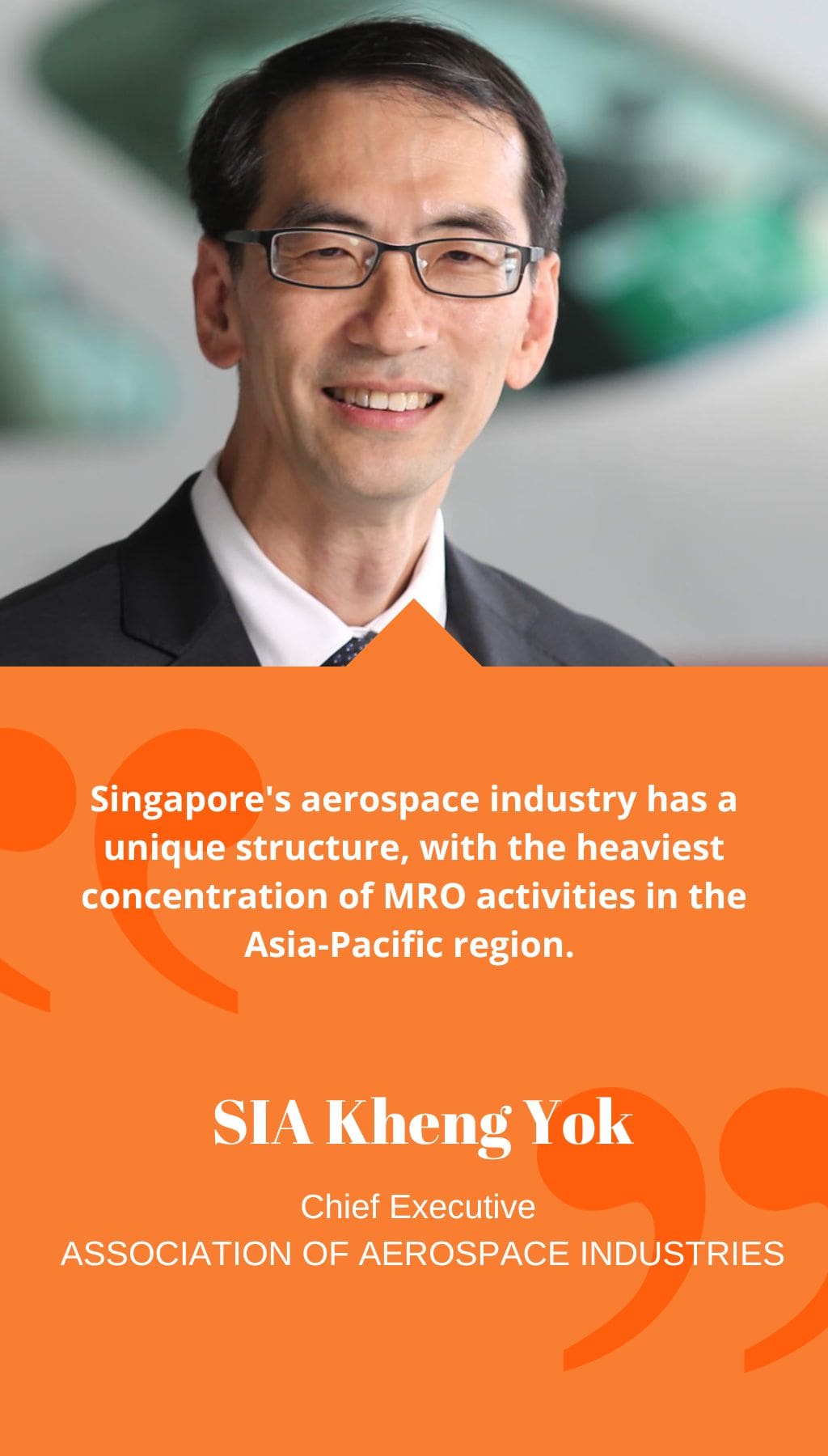
- Singapore | 24 March 2019

Could you describe the objectives of the Association of Aerospace Industries?
The Association of Aerospace Industries is a 13-year-old organization with approximately 130 members consisting of OEMs, MROs, small and medium-sized enterprises, and various service providers that reflect the composition of Singapore’s aerospace industry. The Association aims to promote Singapore as a leading aerospace hub for the benefit of all its members and their business competitiveness. The Association’s mission can be summarized in three points: serving as the voice of the industry and playing a role in policy advocacy, developing the aerospace community by creating collaboration opportunities and drawing synergies, and facilitating businesses by organizing overseas missions, exhibitions, and helping with market connections.
What kind of members does the Association look for, and how can they join?
The Association welcomes members who can both contribute and benefit from being a part of the AAIS community. The core membership remains anchored by aerospace OEMs, MRO, and suppliers. However, the Association is open to members who provide services to the industry. More recently, this includes companies with expertise in applying technology to aerospace, in fields such as data analytics, digitization, robotics, and Industry 4.0.
What are the current trends you have observed in the Singapore Aerospace market, and which segments do you anticipate experiencing strong growth?
Singapore’s aerospace industry has a unique structure, with the heaviest concentration of MRO activities in the Asia-Pacific region. According to the Singapore Economic Development Board (EDB), MRO comprises 90% of the industry output, arising from Singapore’s traditional role as an air transport hub, leading to two major domestic MRO players – ST Aerospace, with roots in the defense sector, and SIA Engineering Company (part of the Singapore Airlines group). ST Aerospace is now ranked as one of the world’s largest third-party MROs, and SIA Engineering Company has an extensive network of 26 joint ventures. The world’s major OEMs have also chosen to make Singapore their significant base for addressing the Asian market. A growing sector is advanced manufacturing. Rolls-Royce assembles and tests Trent engines in Singapore, and both Rolls-Royce and Pratt and Whitney manufacture fan blades here. The supply chain around these activities is creating a positive spin-off locally, as well as to other countries in our neighborhood.
What is the advantage of operating in Singapore as opposed to other markets in the Asia-Pacific Region?
Singapore has a trusted brand, an open economy, an advantageous location, connectivity, an industrial base, a comprehensive aerospace cluster, and skilled talent, providing strong advantages for operating in Singapore. The government heavily invests in education and research and development, supporting the industry. Singapore also has a very strong OEM presence that differentiates us from others. The EDB estimates that we command a quarter of the regional MRO market. Our hope is to continue to grow and extend our market reach.
Singapore’s manpower can often be a challenge to operations given the incredible demand and constant turnover of employees. How does the country aim to navigate this roadblock?
Singapore has a very strong spirit of cooperation between government, employers, and unions, which is the cornerstone of decades of harmonious industrial relations in Singapore. The industry and educational institutions work closely together to ensure that they develop industry-ready graduates. This has resulted in a responsive and farsighted education system that anchors our competitiveness as a country. There is a framework and system that enables everyone to be reskilled and upgraded throughout his/her working life to adapt to changes in the workplace. It is incorrect to say that there is constant turnover of employees.














